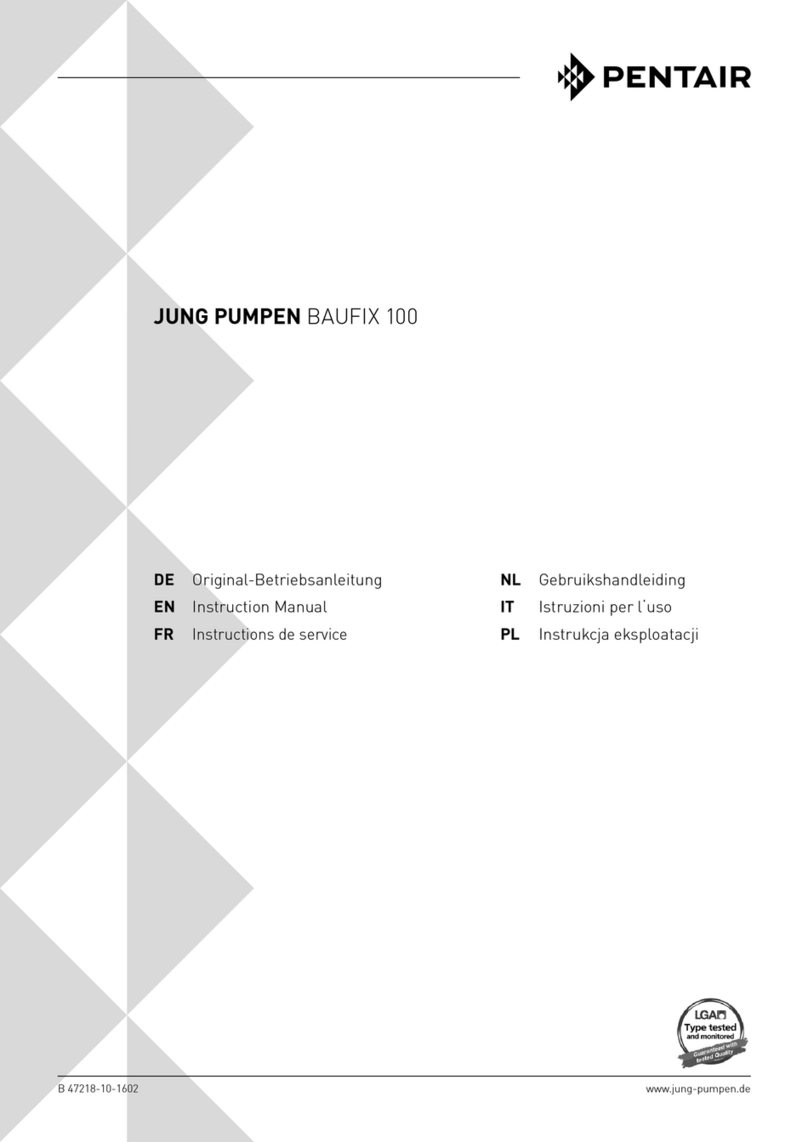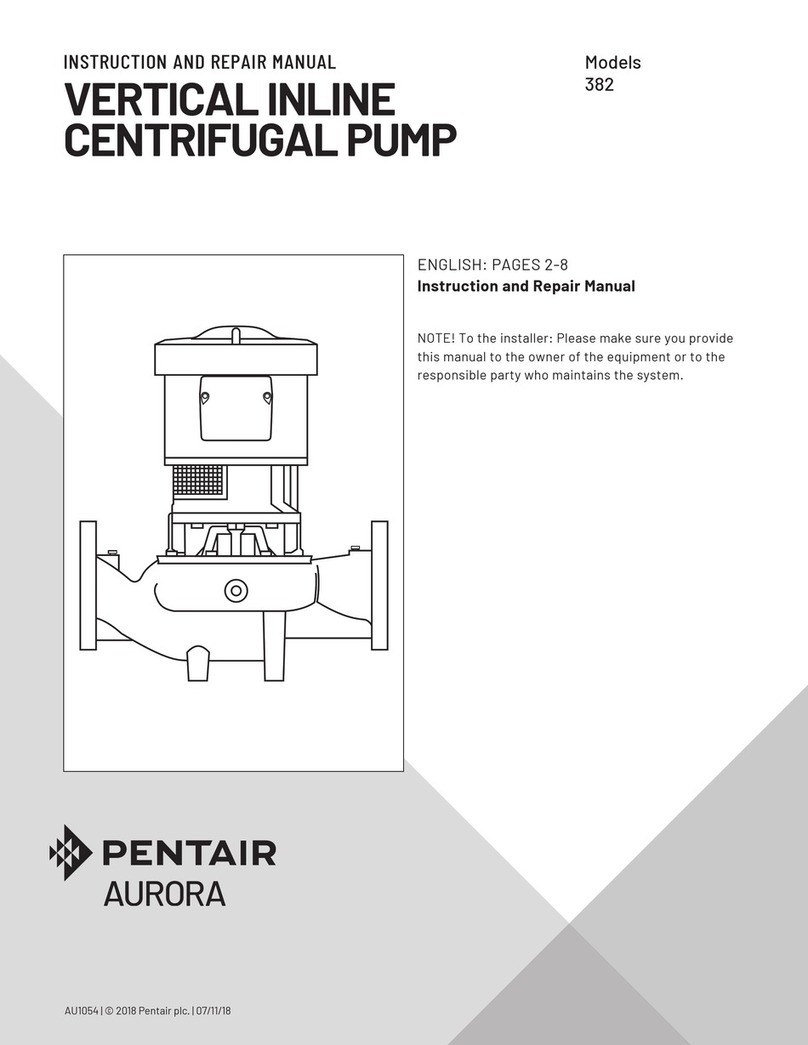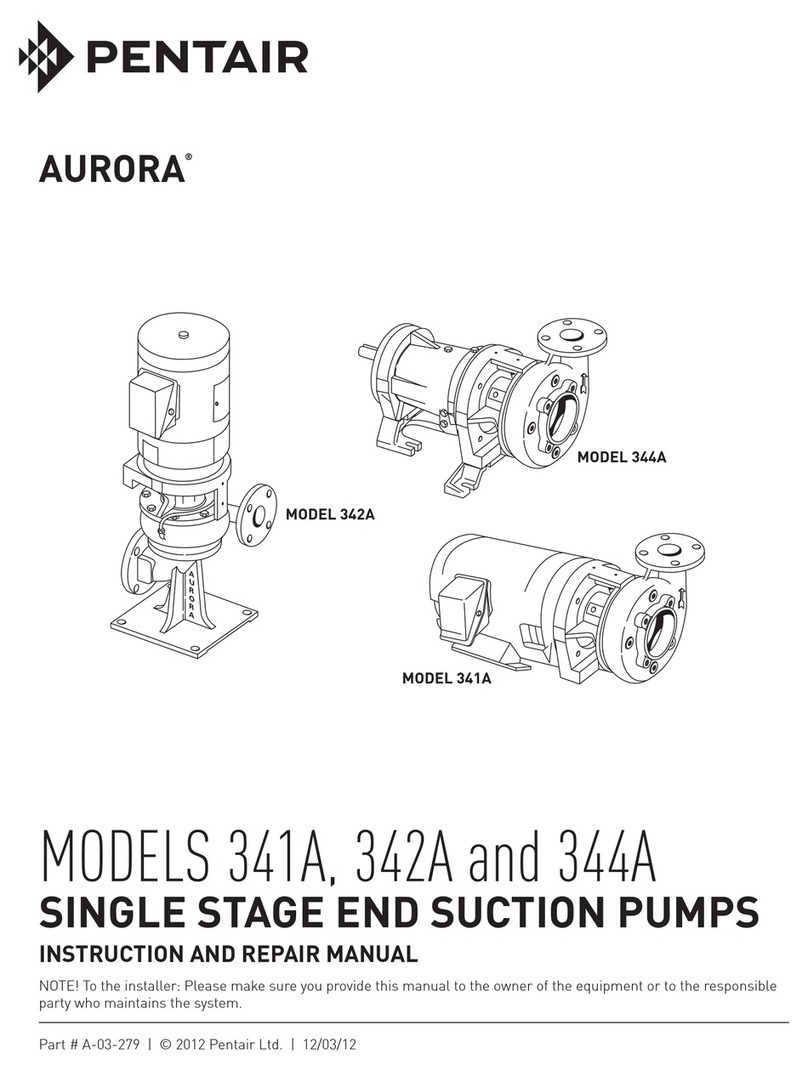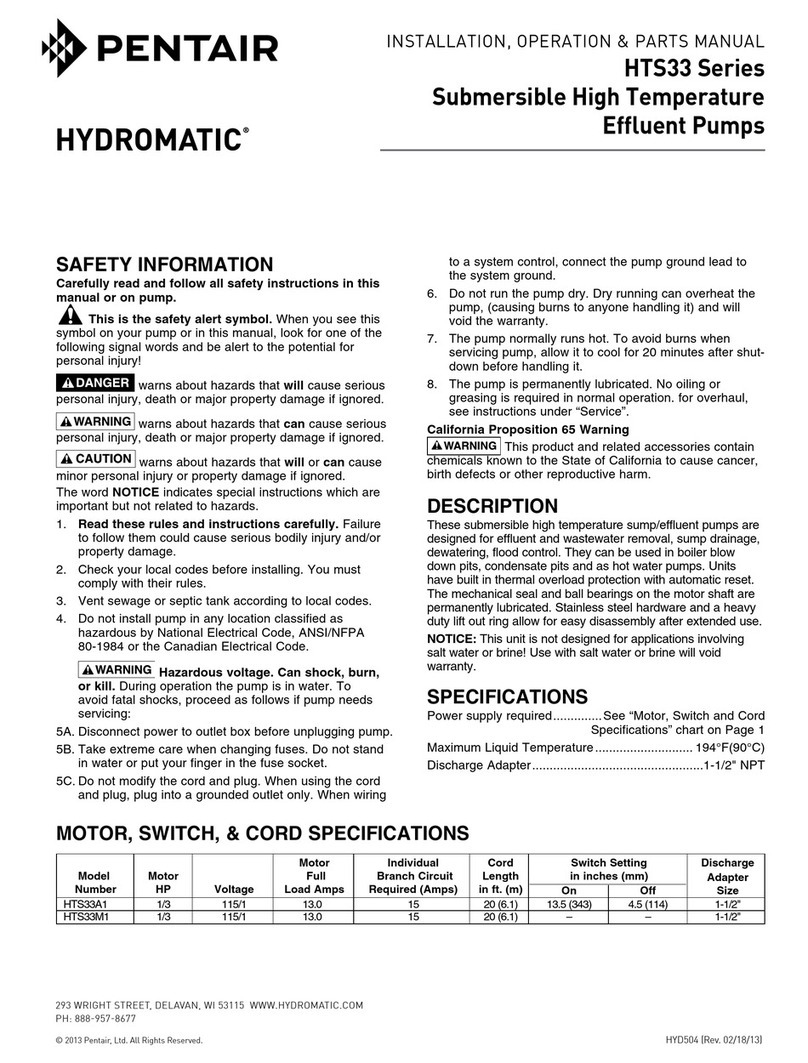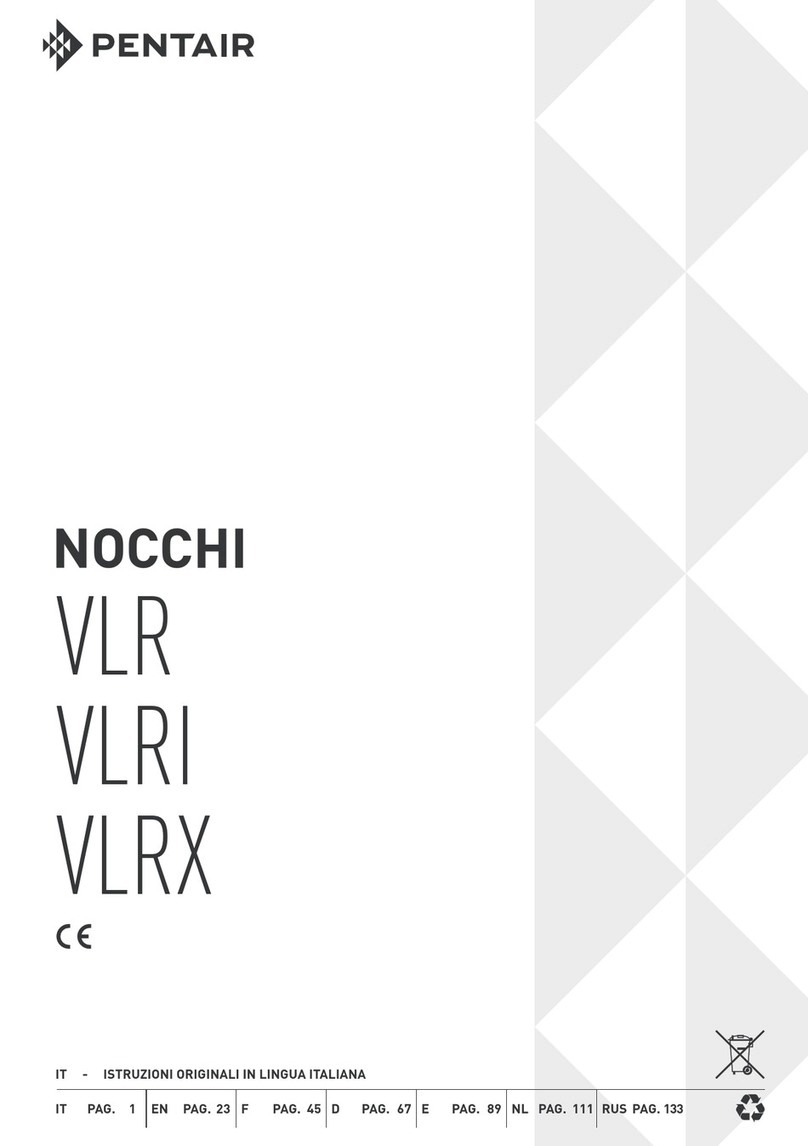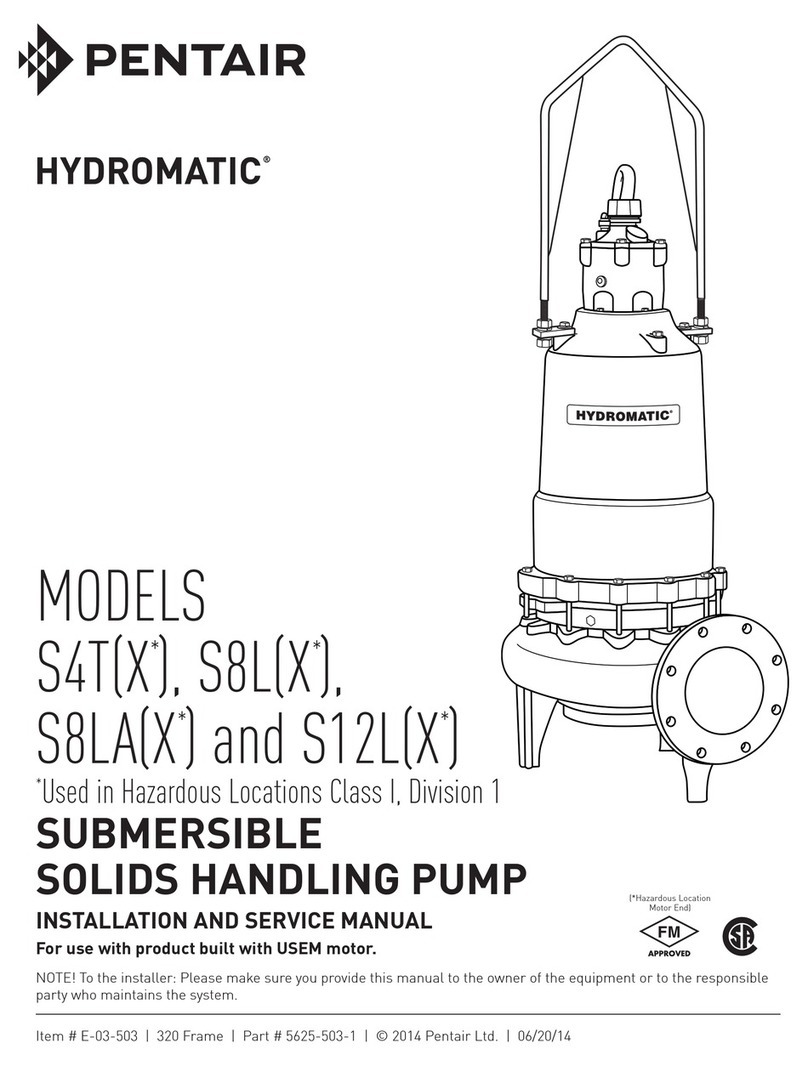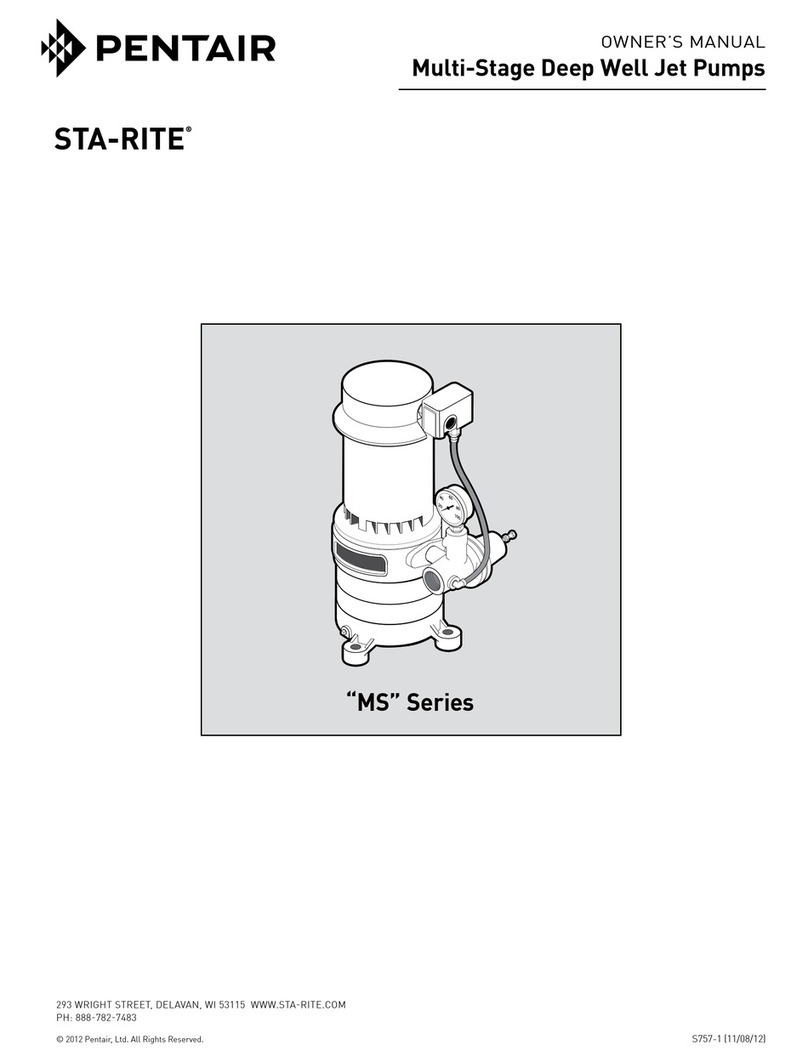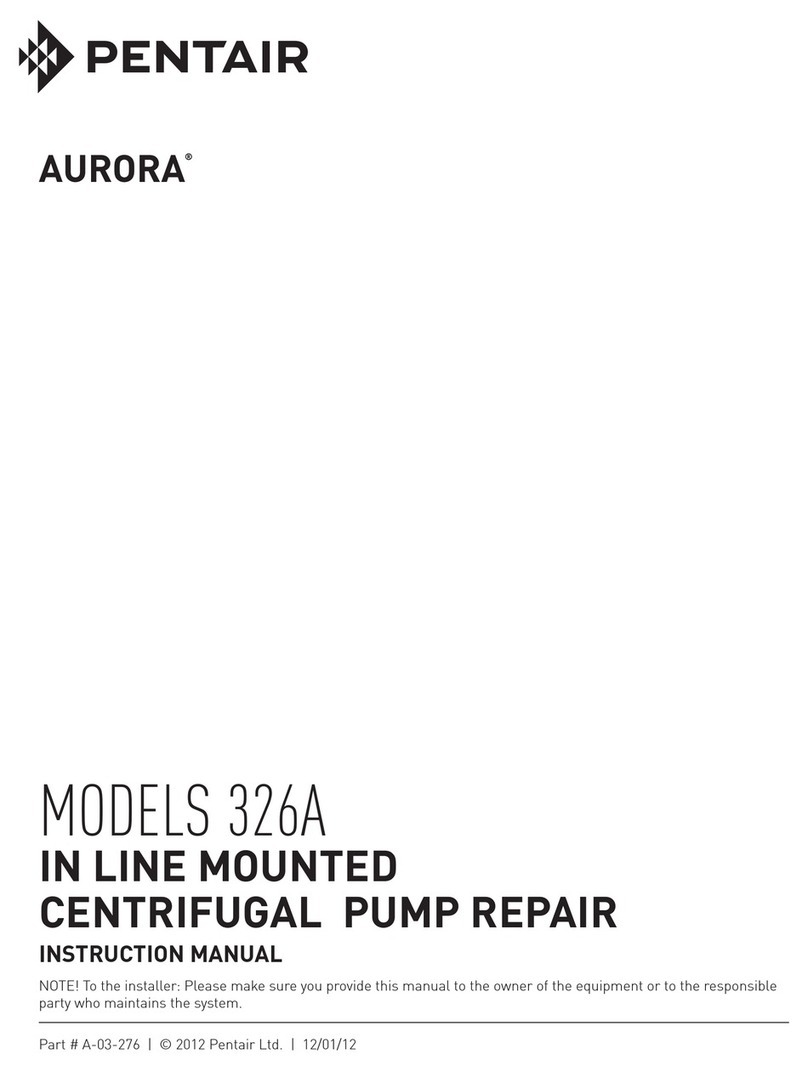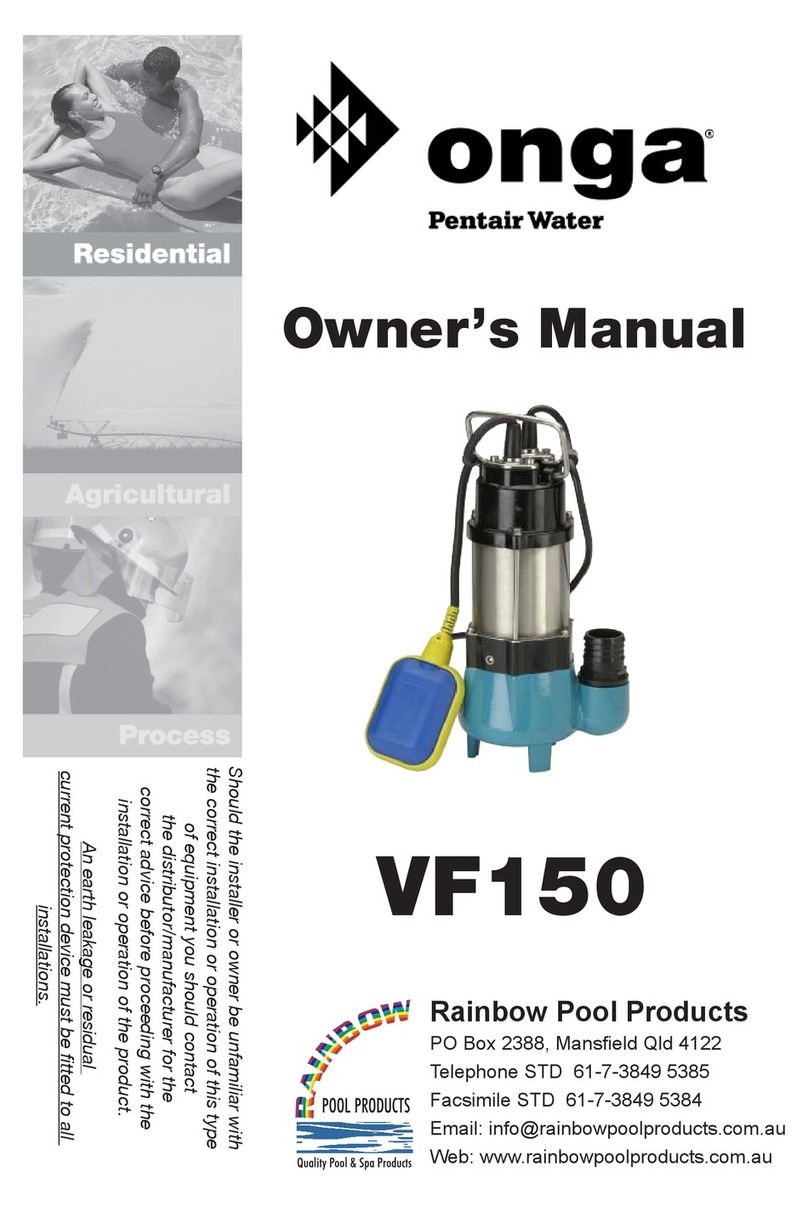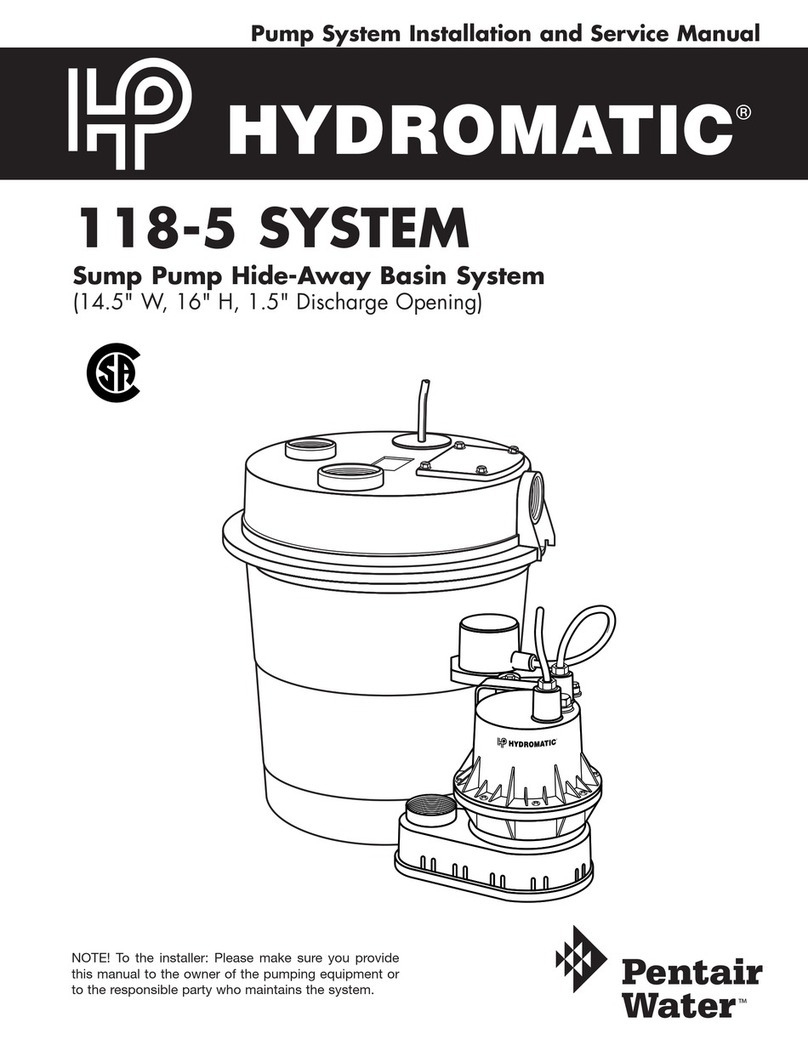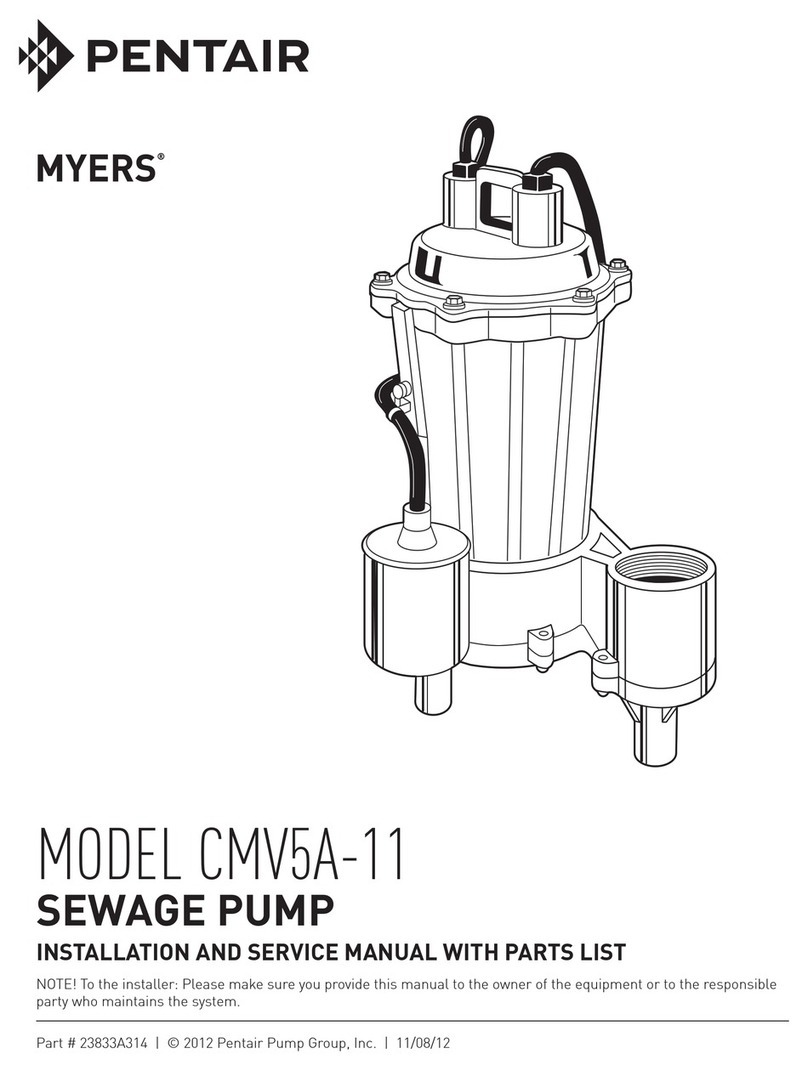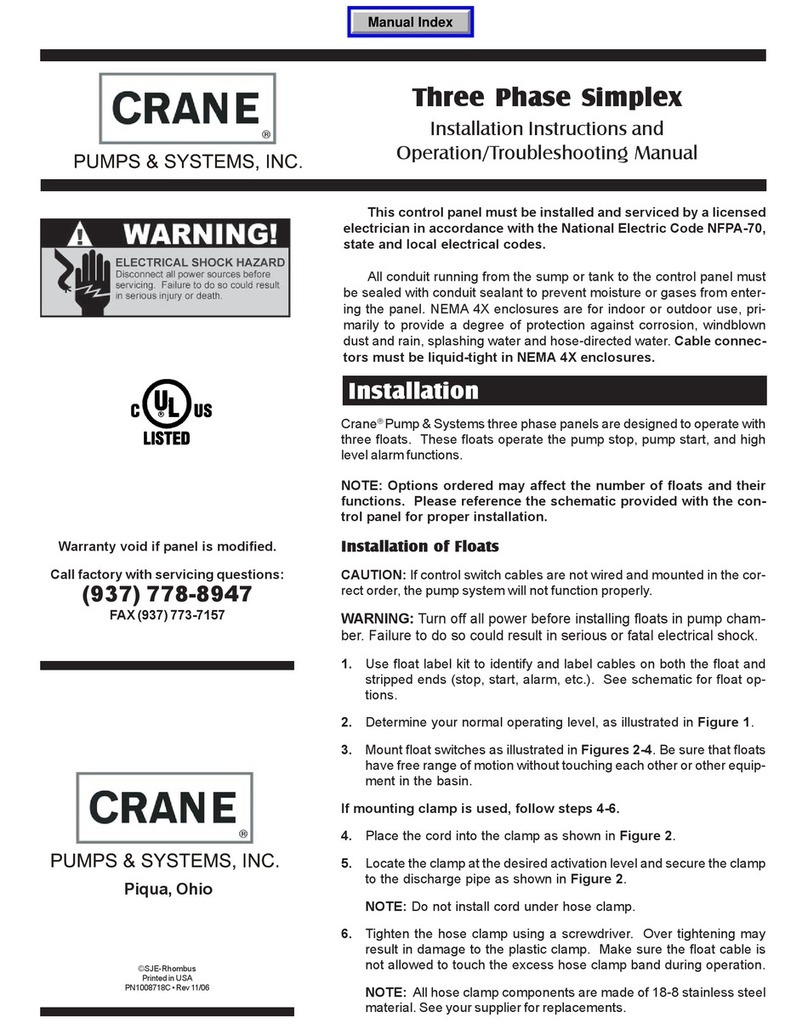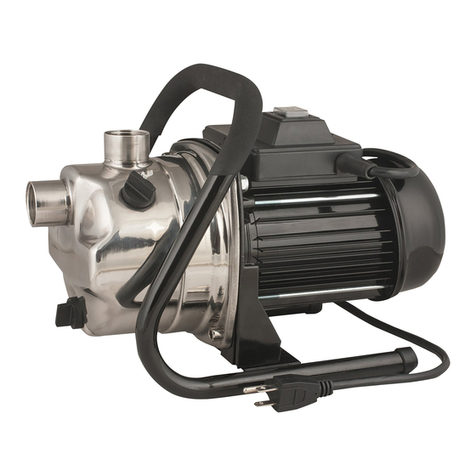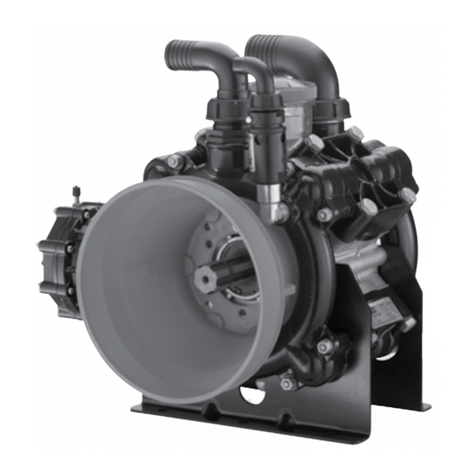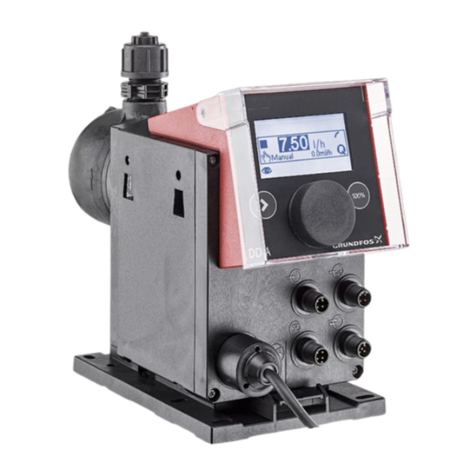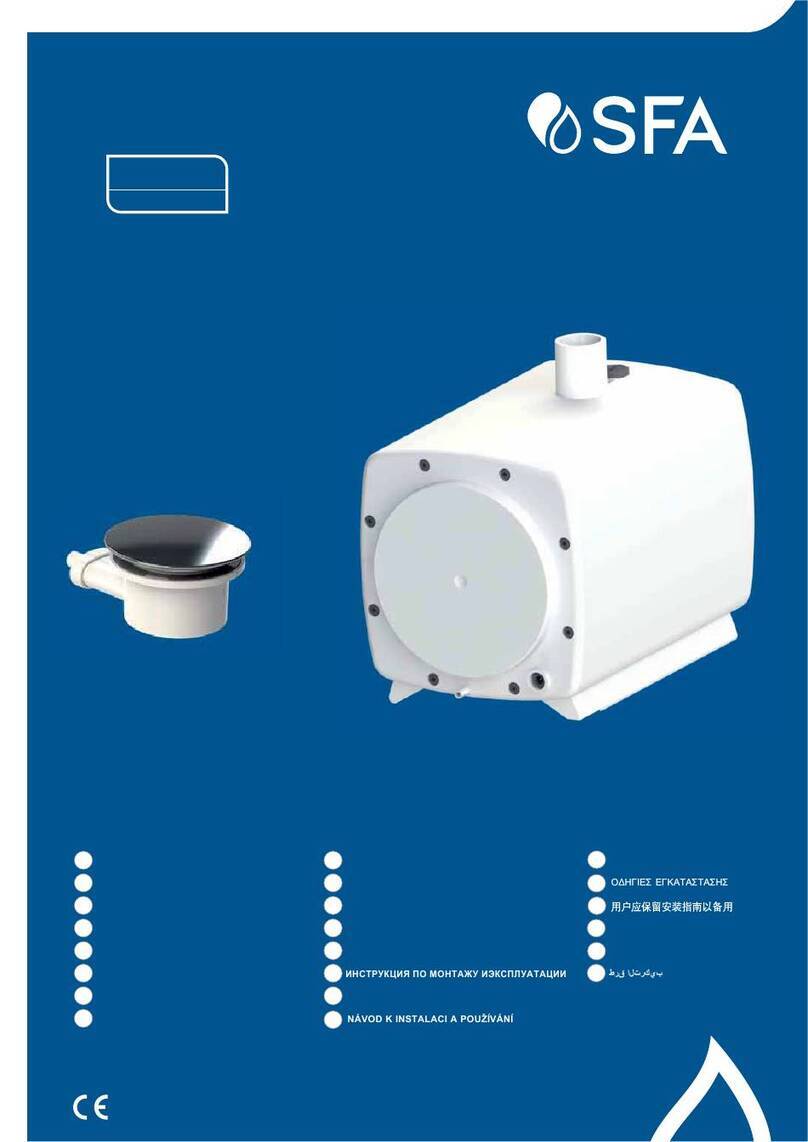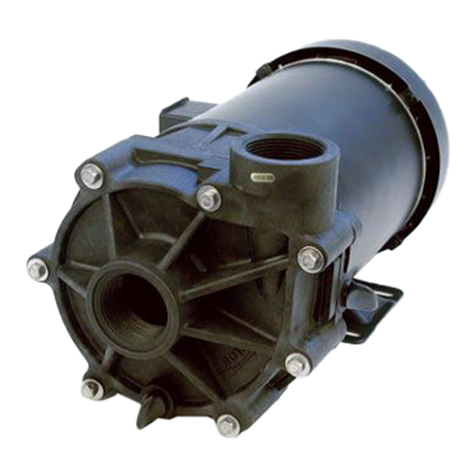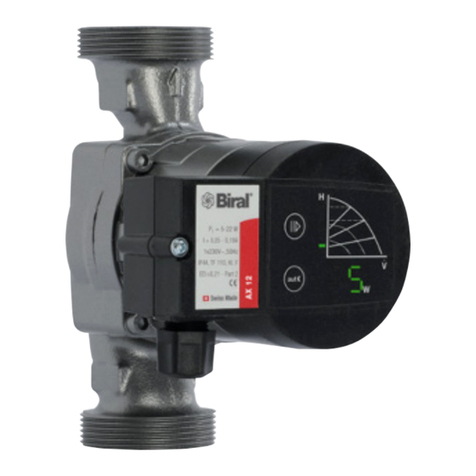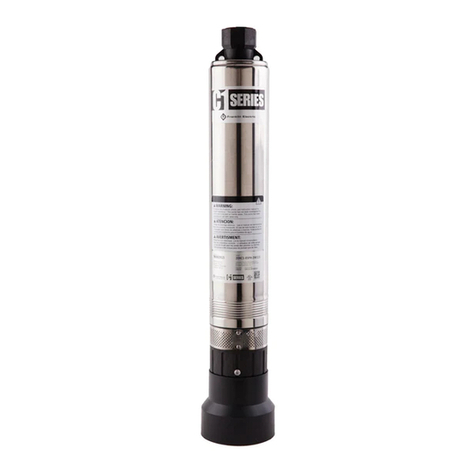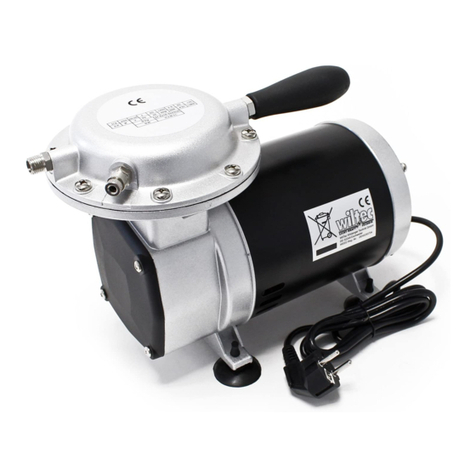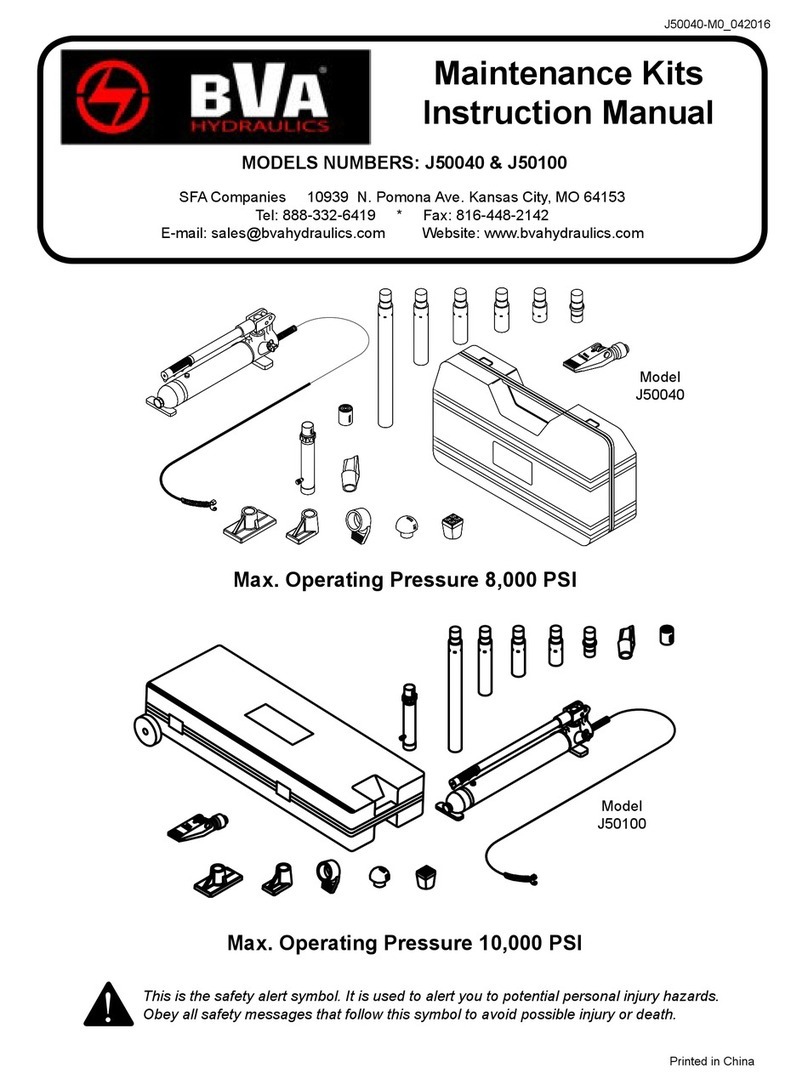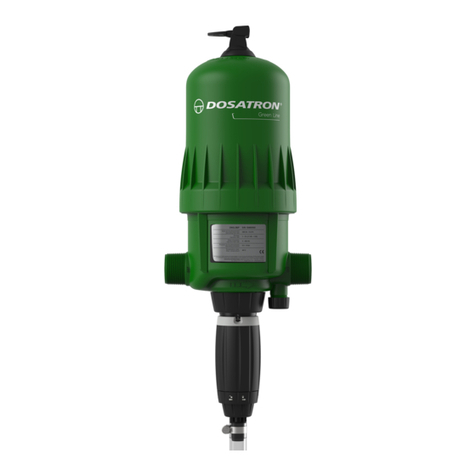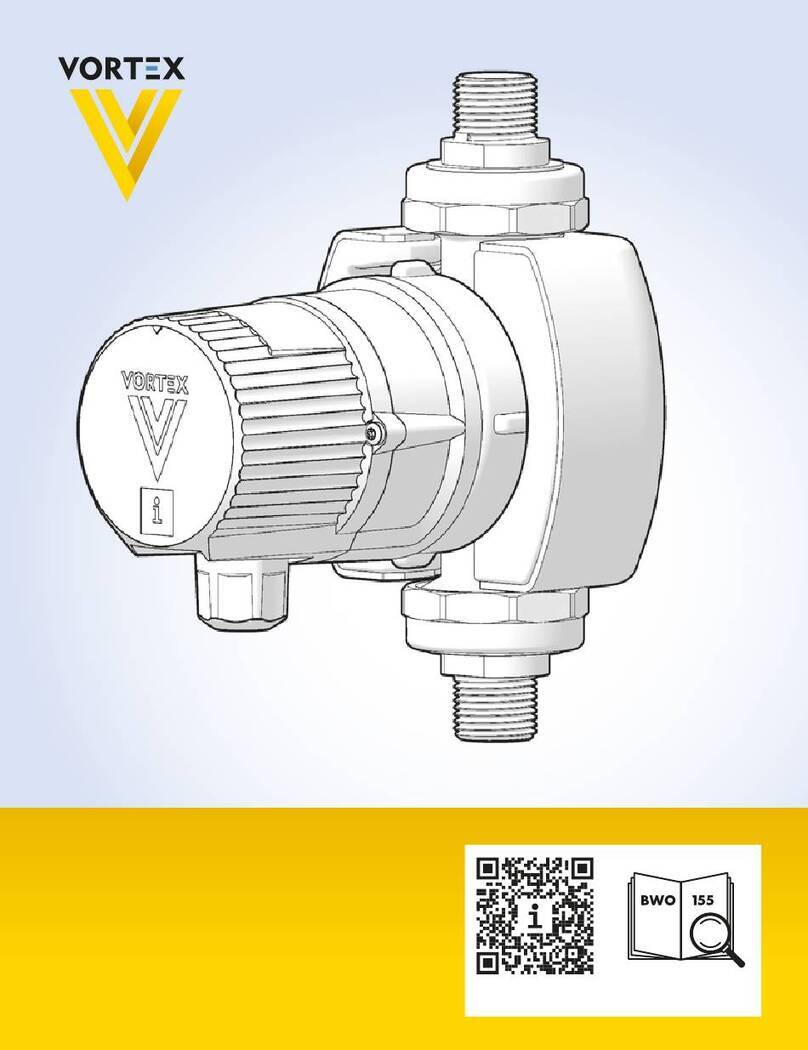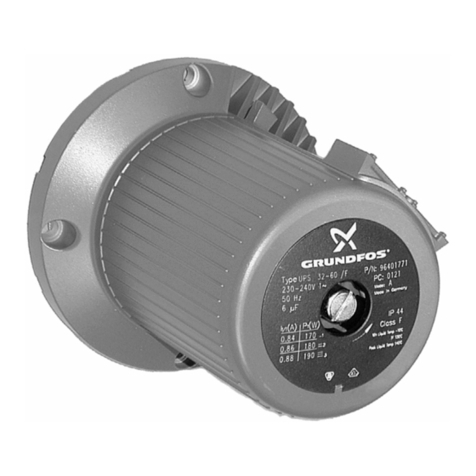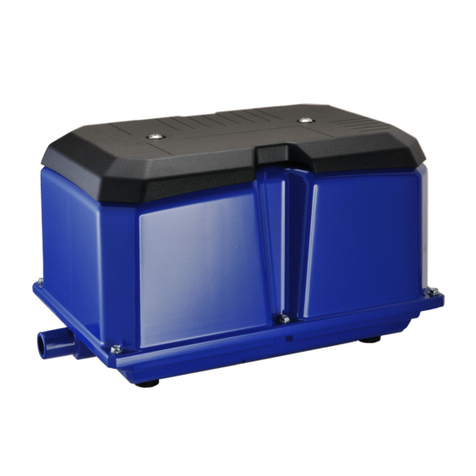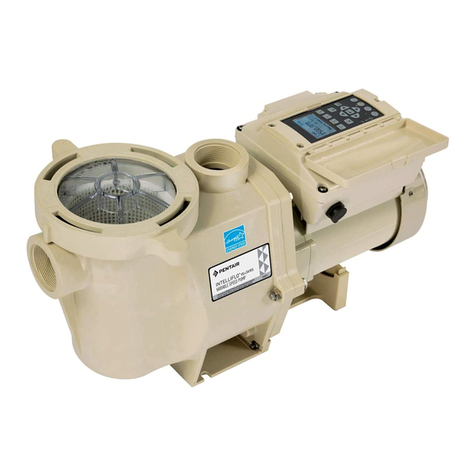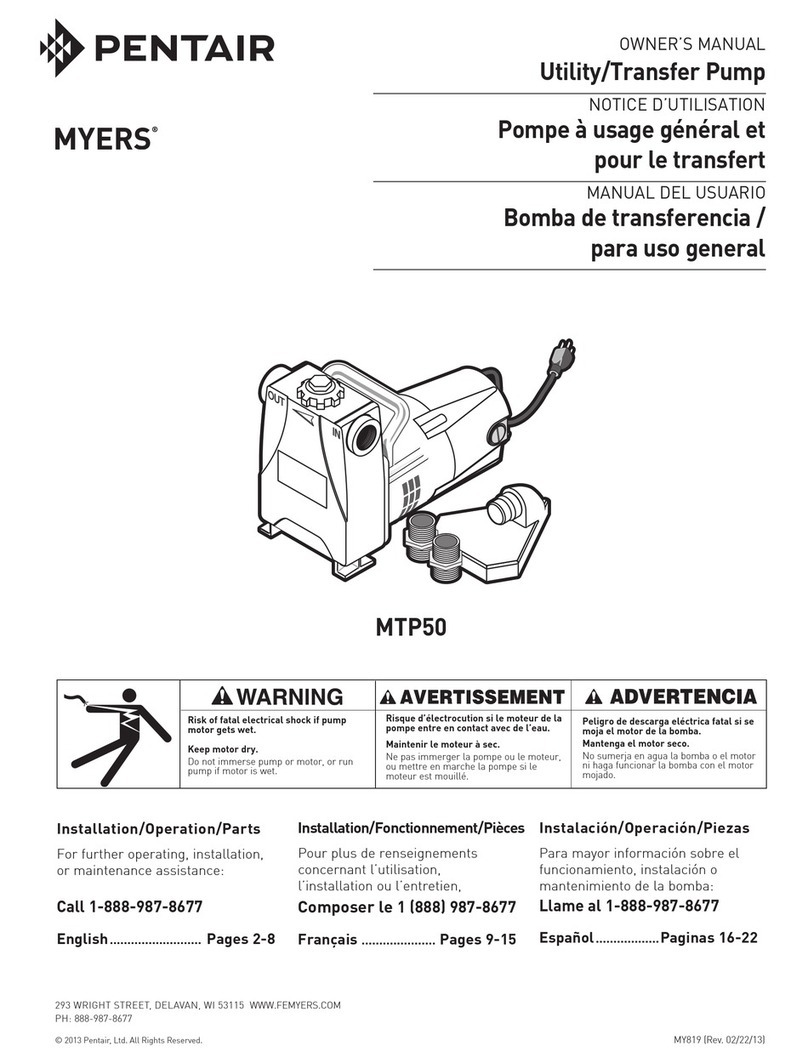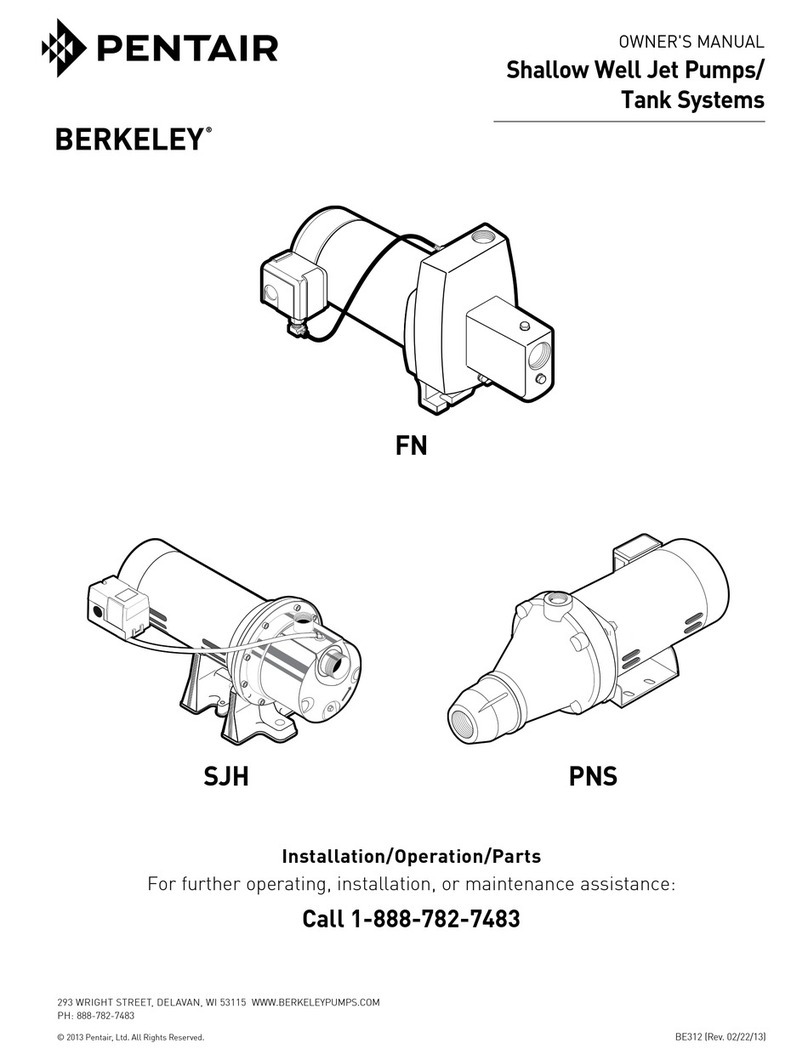
5
The gate valve is used in the priming operation, as a throttling
valve to control pump volume, and to shut down the pump for
inspection and maintenance.
LUBRICATION:
In dry locations, each bearing will need lubrication at least
after every 4,000 hours of running time or 6 to 12 months
- whichever is more frequent. In wet locations (exposed to
dripping water, to the weather or to heavy condensation found
in unheated or poorly ventilated underground locations)
every 2,000 hours or every 3 to 6 months - whichever is more
frequent.
Use Chevron SRI, NLGI2.
Lubricate motor per motor manufacturer’s instructions.
GENERAL INSTRUCTIONS:
1. Keep this pump and motor properly lubricated.
2. When there is a danger of freezing, drain the pump.
3. Inspect the pump regularly for leaky seals, gaskets and loose
or damaged components. Replace or repair as required.
ELECTRICAL WIRING. Normally, your pump will be
supplied with an attached drive motor. The motor should be
wired in accordance with the wiring diagram found on the
motor nameplate. Be sure the voltage, frequency, and phase of
your power supply corresponds with the nameplate data. It is
advisable to provide a separate switch and overload protection
for your pump motor to protect against power failure in some
other area. Conversely, if the pump motor develops electrical
problems, it will be isolated from other equipment.
PRESTARTING INSTRUCTION. The coupling halves should
be connected. Prior to connection, however, the drive motor
should be started to make sure of proper pump rotation. Do
not start pump until all air and vapor has been bled. This
ensures that there is liquid in the pump to provide the necessary
lubrication. Without the fluid around it, the seal may be
ruined in a few seconds of operation. It is normal for the
mechanical seal to drip during the first few minutes to one hour
of operation.
PUMP DISASSEMBLY: For frame mounted pumps,
model 3314.
Read and understand all safety warnings at the beginning of the
manual before beginning installation or any repair work.
1. Ensure the electrical power is locked out, the system
pressure has been lowered to 0 psi and temperature of the
unit is at a safe level before beginning any disassembly of
the pump.
2. Isolate the pump from the system by closing the valves that
should be located on both the suction and discharge of the
pump. Loosen the drain plugs (4) at the bottom of the casing
and drain the pump. Remove all relief, cooling, flushing, or
drain lines from the pump.
Inspect removed parts at disassembly to determine if they can
be reused. Ball bearings that turn roughly or show wear should
be replaced. Cracked castings should never be reused. Scored or
worn pump shafts should be replaced. Gaskets should be
replaced at reassembly simply as a matter of economy. They are
much less expensive to replace routinely than to replace singly
as the need arises.
3. Remove the coupling guard.
4. Loosen the sets crews in both coupling halves and slide each
half back, as far as possible on its shaft. Then, remove the
coupling sleeve.
5. Loosen, but do not remove, the volute capscrews (5).
Use capscrews in the jackscrew holes to loosen the pump
rotating assembly from the volute (6).
6. Now remove the volute capscrews (5) and remove the
power frame and rotating assembly from the volute (6).
7. Optional case wearing ring (7) is pressed into volute with an
interference fit, and must be removed with a puller. New
rings should be used for reassembly since it is likely that
during removal this fit will be lost.
8. Remove the impeller capscrew (9), impeller washer (9A)
and impeller washer gasket (9B), and bolt gasket (9C).
Remove impeller (11).
9. Remove impeller key (12).
10. Remove the shaft sleeve (25), shaft sleeve gasket (10), and
rotating portion of the mechanical seal (head).
MODEL 3310
Warning: Sudden Start-Up Hazard
Disconnect and lockout power source before servicing.
Failure to follow these instructions could result in serious
personal injury, death or property damage.
Warning: Hot Surface Hazard
If pumping hot water, insure guards or proper insulation is
installed to protect against skin contact with hot piping or
pump components. Failure to follow these instructions could
result in serious personal injury, death or property damage.
Warning: High Pressure Hazard
The pump is rated at a maximum of 290 psi at 300°F. Do
not exceed this pressure. Install properly sized pressure
relief valves in system. Failure to follow these instructions
could result in serious personal injury, death or property
damage.
Warning: Spraying Water Hazard
When servicing pump replace all gaskets and seals. Do not
re-use old gaskets or seals. Failure to follow these instruc-
tions could result in serious personal injury, death or prop-
erty damage.
Warning: High Pressure Hazard
Make certain that the internal pressure of the pump is relieved
before continuing. Failure to follow the instructions could
result in serious person injury, death, or property damage.












